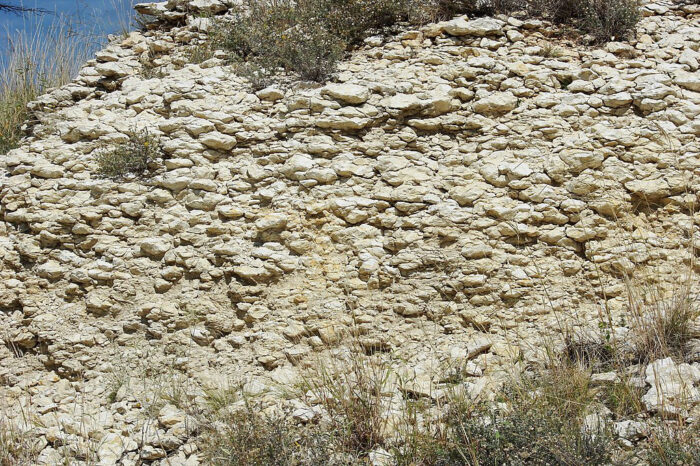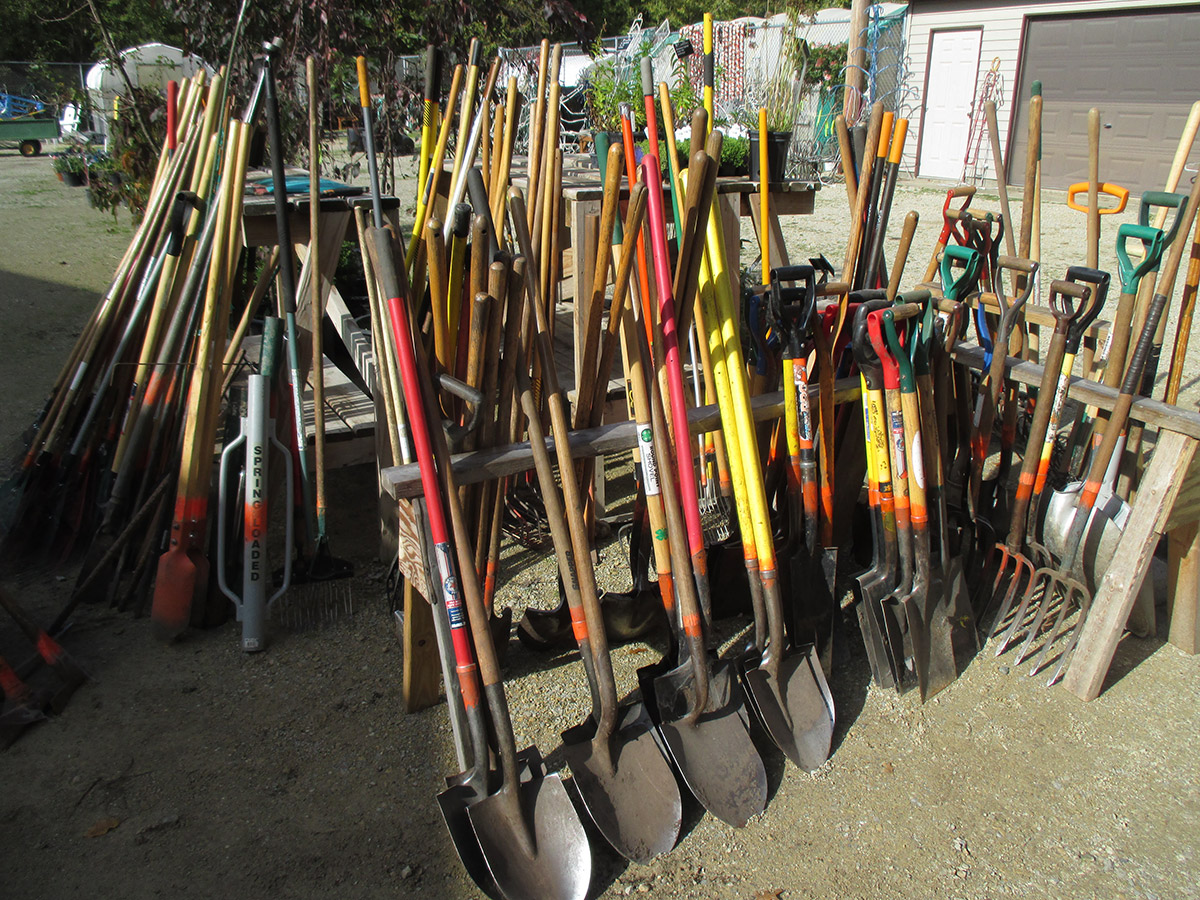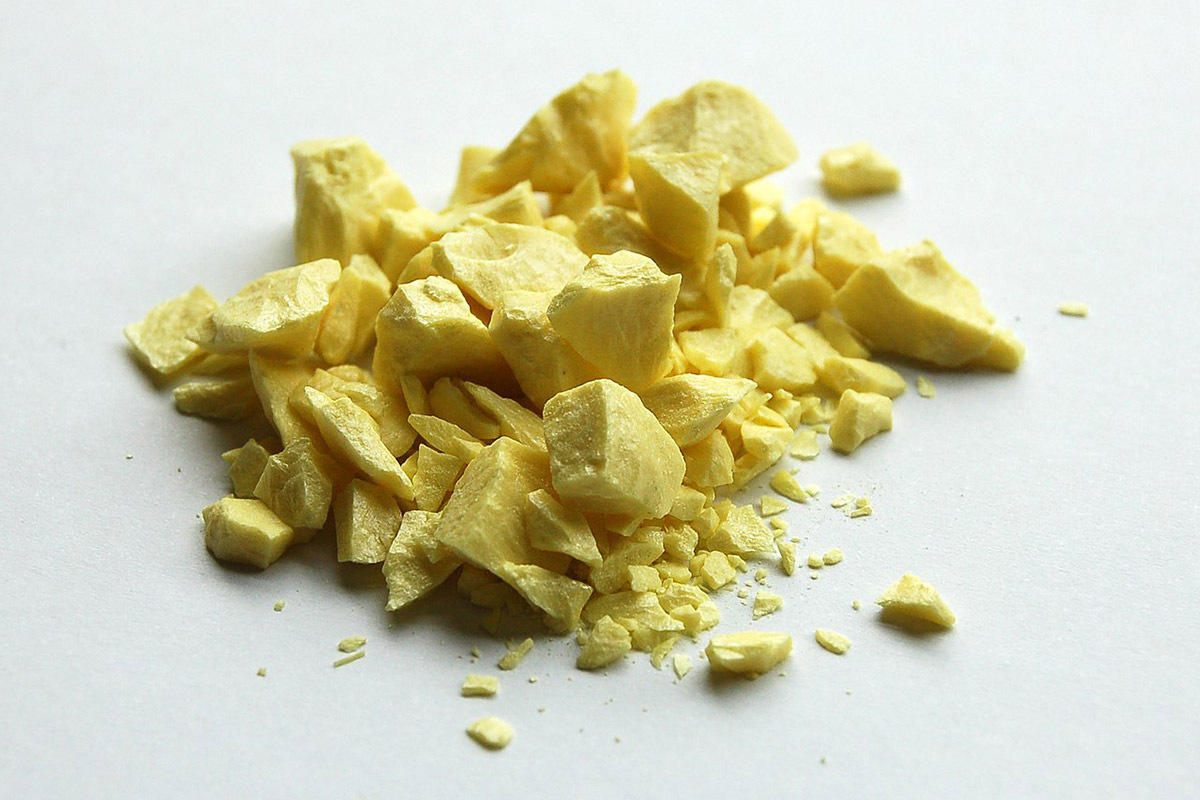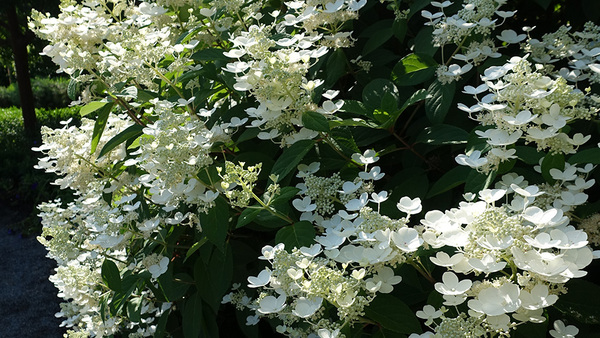
How many times have you heard gardeners lament the presence of caliche in their soil? If you live in the Southern Plains or the desert Southwest, it’s likely you’ve heard that complaint a lot. So what exactly is caliche, and what can we do about it?
What caliche is
Simply put, caliche is a layer of soil in which the individual soil particles are cemented together with calcium carbonate (CaCO3), which is the carbonic salt of calcium. The term “cemented” is key here, because the resulting soil is very much like actual cement: rock-hard and nonporous. Caliche is formed over thousands of years as CaCO3 washes down through the soil layers and accumulates in a solid layer. The layer can be very thin or very deep and is usually found a few inches to a few feet below the surface of the soil, although it can be right at the surface if the soil has been exposed by erosion. Caliche is commonly found in soils in arid or semi-arid regions such as the desert Southwest, but it is also found in much of Texas (mostly south, west, and central) and in western Oklahoma.
What caliche isn’t
I’ve heard folks mistakenly refer to any heavy-bodied soil as caliche, including soil with a thick clay layer or with a high limestone bedrock content. These are difficult soils to garden with, for sure, but they are not technically caliche. However, these difficult soils will benefit from some of the same soil amendments I mention below.
Why caliche is terrible for plants
Caliche is terrible for plants for three reasons: (1) Plant roots cannot penetrate it, so they become root restricted. (2) Water can’t drain through it, so roots are suffocated. (3) Its alkaline nature can make several essential micronutrients (phosphorus, iron, boron, zinc, and manganese) unavailable to plants. Gardeners with alkaline soil such as caliche need to be on the lookout for signs of nutrient deficiency in their plants.
What to do about it

There are three things you can do to make gardening in caliche soil more possible.
1. Physically break it up
To provide passage for plant roots and water drainage, the caliche layer has to be breached. This means breaking it up with a mattock or rock bar, ripping it with a plow or tiller, removing it with a jackhammer (I’m not kidding), or even using an auger to dig planting holes for trees and shrubs. These methods may sound extreme, but if you’ve dealt with caliche before, you know that they aren’t! The key here is to tear an opening in the caliche layer that’s big enough to provide a space for the plants’ roots to penetrate to the better soil below. If the hole that you’ve dug for a plant doesn’t fully penetrate the caliche layer, you can use a drill with a long masonry bit (the length of the bit will depend on the depth of your caliche layer) to make a couple of holes down deep through your planting hole. This is the step that we all wish wasn’t necessary for gardening in caliche because it is the most work, but it’s necessary. The only time you may get away with not doing this is if your caliche layer is deep in your soil, but if that’s the case then you are likely not looking for ways to remedy it.

2. Add organic matter
This step is absolutely crucial to building good gardening soil out of poor soil, especially caliche. You want to get as much organic matter on top of your caliche as possible, whether it be in the form of compost, mulch, cover crops, leaf mold, or wood chips. You also want this organic matter to get wet regularly so that it can break down and build soil. If you can spare the water, moisten this layer occasionally. Scavenge organic matter from other parts of your yard or garden if necessary. In my own garden I have used leaves, kitchen scrap compost, old straw, hay, half-rotted wood chips, and chicken bedding as organic matter for my soil. Adding organic matter to your caliche soil will help build a thicker layer of good soil, and it will also buffer the alkaline nature of the original soil. Organic matter is critical to all good soils, and it is an especially important step to amending caliche soils.

3. Add sulfur
Powdered or pelleted sulfur is a useful amendment for alkaline soils, buffering the alkalinity and thereby making micronutrients such as iron more available to plants. Sulfur takes time to be effective in soil, so it should be applied a year ahead of planting for full results. Consult the package for specific application rates, as they will depend on your soil type.
Many folks think that caliche soils are a death sentence for gardening, but they don’t have to be if you are willing to put in the effort. If you know you have caliche soil, then make sure you evaluate your garden beds or planting sites carefully before you add plants. The time to make amendments is before you plant, although you can (and should) continue to add organic matter to your soil over many years, even after your site is planted.
—Karen Beaty is a forestry specialist in the Wildland Conservation Division of Austin, Texas.


















Comments
Log in or create an account to post a comment.
Sign up Log in